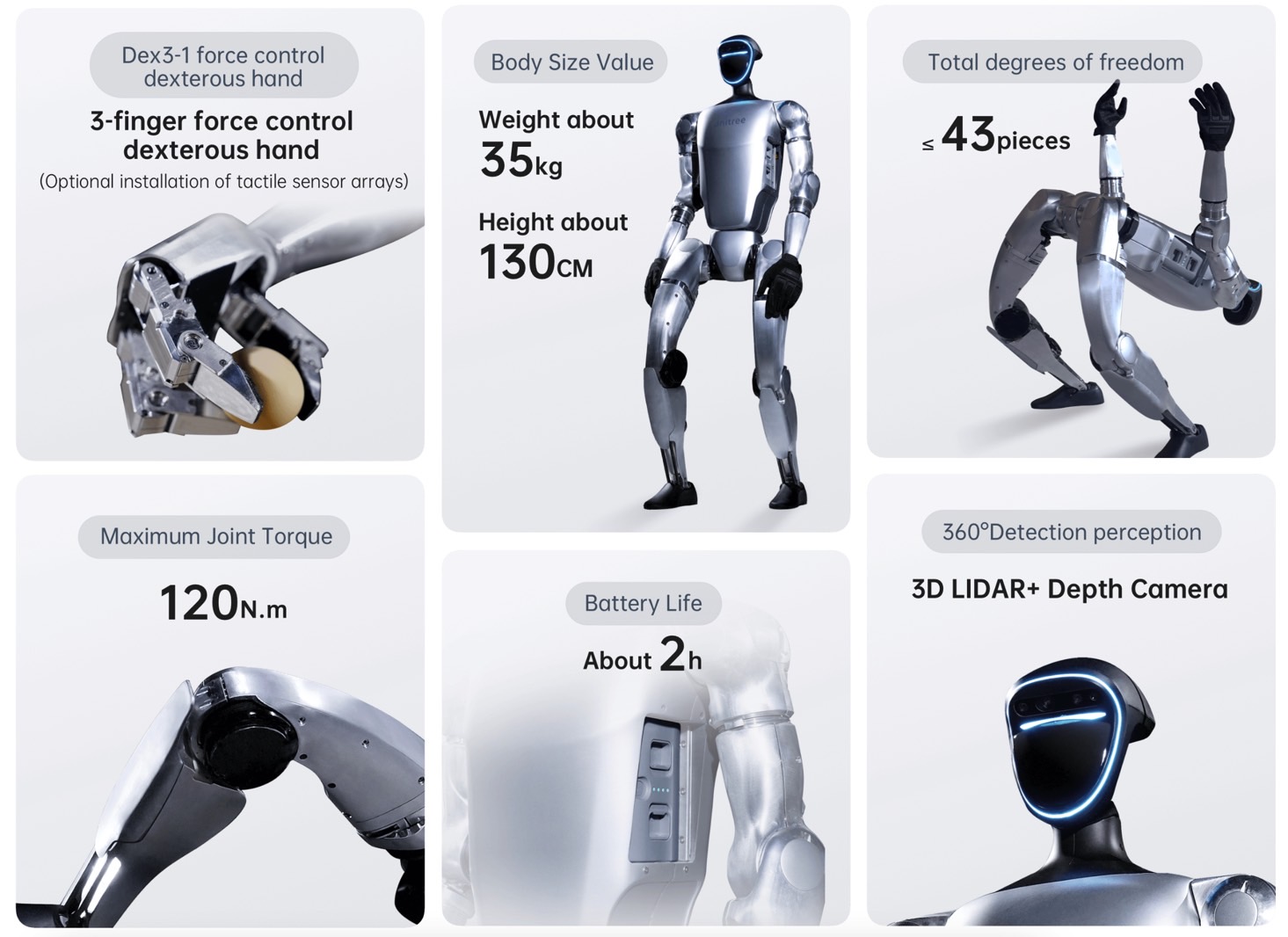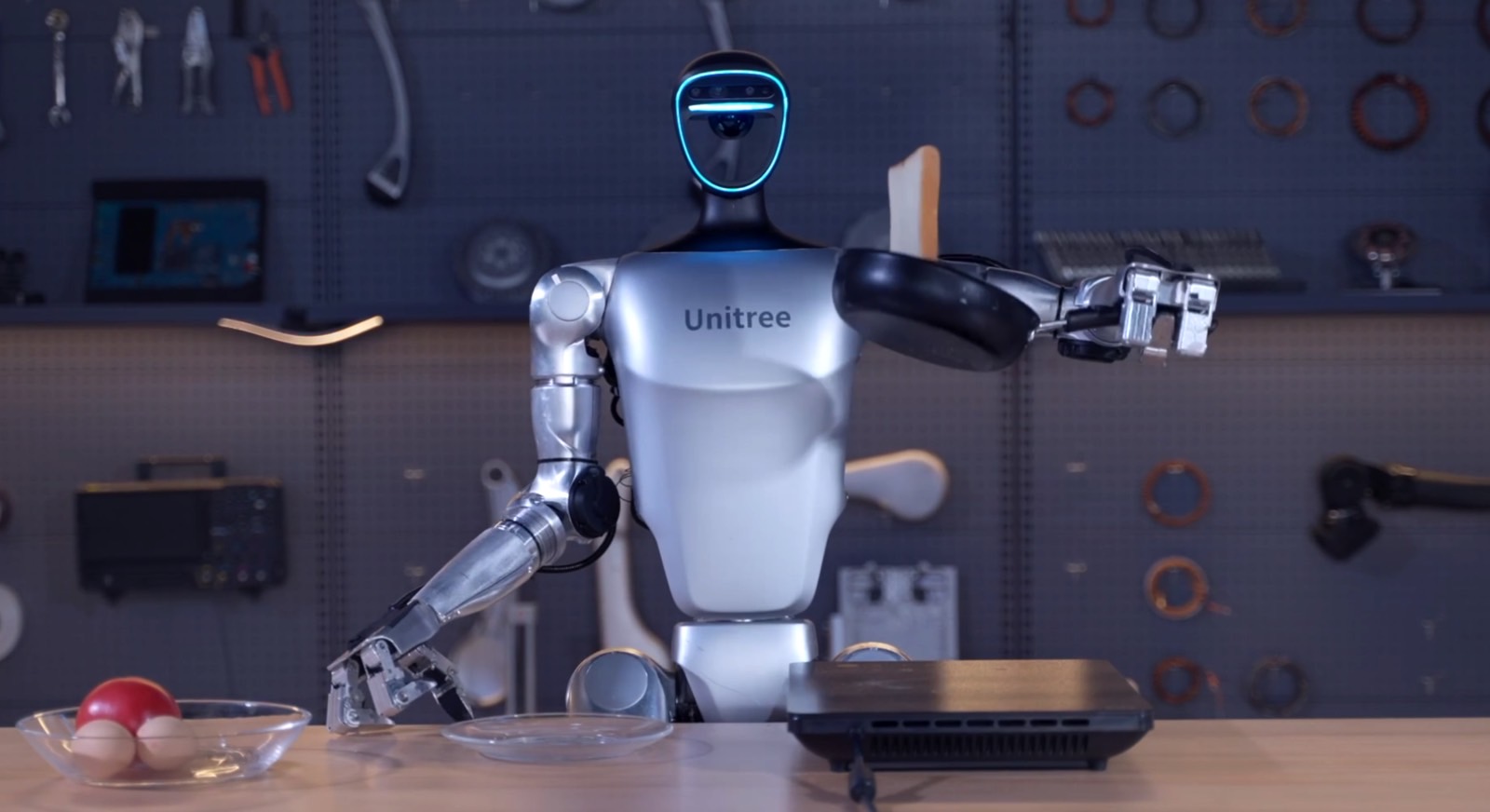The arrival of generative AI products like ChatGPT has made many people realize the imminent dangers of AI. Not everyone worries about cataclysmic events caused by future highly intelligent AI. Some people think AI will take their jobs in the immediate future, allowing companies to automate roles that previously required human labor.
I don’t share that worry, but this $16,000 humanoid AI robot made me realize I can’t wait for AI to take my job at home. I’m talking about a home robot that could do all the chores I routinely perform without any direct input from me.
I’m not saying the Unitree G1 robot you’ll see in the clip below is quite ready to replace us in our homes quite yet. But we’re probably a few years away from robotics and AI innovation that will make these home companions possible.
The $16,000 humanoid robot
Unitree Robotics is a company from China that plans to mass-produce a humanoid robot that costs around $16,000. It’s not exactly affordable, and it’s not necessarily made for the smart homes of the present. And I don’t trust the current AI technology out there for what I have in mind for the smart home robot I eventually want in my life.
But Unitree has created something remarkable. As you can see in the following clip, the G1 looks like a robot designed for the home rather than assembly lines. It has a pleasant humanoid appearance, complete with a face and arms with three-fingered hands. It can maintain balance in various scenarios and handle all sorts of obstacles.
The robot measures 1.32m (4.33 feet) when standing, but it can be folded to about 690 x 450 x 300 mm (27 x 17.7 x 11.8 in) for storage. It weighs about 35kg (77 pounds) and includes a 9,000 mAh battery that can offer about 2 hours of battery life.
The robot has 3D LiDAR, a RealSense depth camera for eyes, a noise-canceling microphone array, and a 5W stereo speaker.
In other words, this type of robot could be perfect for any home. Before genAI products like ChatGPT and Gemini arrived, I’d have ignored any sort of robot for the home, whether it’s a four-legged companion or the humanoid kind.
How an AI robot can take my job
But large language models will allow robots to understand human speech and respond in a conversationam manner. Innovations like OpenAI’s Voice Mode for ChatGPT or Google’s Gemini Live would let me talk to humanoid robots just like another person.
Why would I even want to do that? First, a humanoid robot would give ChatGPT or Google a physical presence. Rather than talking to a smartphone or handset, I’d be talking to a being-like device. But that’s not why I’d want a humanoid robot at home.
I’d want the robot to do chores around the house when I’m home and away by following my commands. I’d want to talk and text to it and receive responses in kind.

I’d instruct the robot to cook meals, load and unload the washing machine, dust, vacuum, mop the entire house, clean the windows, water the plants, and iron clothes. I’d even have a robot unload the dishwasher, as I’m assuming it would be able to handle dishes without breaking them.
I’d have the robot open windows at preset times to air the house when I’m not home. I might even instruct it to turn on lights at preset times and play random music or video so that would-be thieves think someone is home. The robot would also be at the center of the smart home’s surveillance system, acting as a deterrent.
The robot could also handle package delivery whether I’m at home or not. I’d love it if I could instruct it to take out the trash or even go for quick shopping runs at the nearest grocery store. However, I probably wouldn’t go as far.
One more thing
A robot could also help in emergencies. Google just added a life-saving feature to the Pixel Watch 3, which is unavailable on other smartwatches. The wearable can call emergency services if it can’t detect a pulse.
Imagine a nearby robot realizing its owner is in distress. Maybe I’m alone at the house and choke on food, or I fall and hit my head. An AI humanoid robot could call 911 and open the door. It might also assist with basic help while emergency responders arrive, like clearing my airways and performing CPR.
On the same note, a humanoid robot could be a good babysitter for younger kids and older adults, though I’m not sure I’d trust the AI with that.
We’re not quite there
All of this sounds like a sci-fi movie scenario right now, but I’d have no problem employing a home robot to assist me with every chore around the house. As I’m getting older in the age of AI, I want to focus on health and fitness, so any help around the house to free up my time and avoid unnecessary effort with chores will come in handy.
Again, the scenarios above won’t necessarily be possible right now, even though Unitree shows the robot handling a pan in a “cooking” scenario. GenAI algorithms are only good for making the robot understand my commands.
It would also require algorithms that let me teach it how to perform these chores. It would need AI agent programs that allow him to perform actions safely, like watering plants without making a mess, unloading the dishwasher without breaking anything, or ironing clothes without burning down the house.

Such a robot would also need a slightly larger battery for longer work sessions. It would also require a secure operating system with privacy at the core. This robot would need to process almost everything on-device, meaning on the high-end chip powering its AI abilities. It would have to connect, work with, and manage other smart home systems.
Finally, it would need a longer shelf life. The Unitree G1’s 8-month warranty isn’t good enough. I’d also need to be able to easily have the robot serviced when parts malfunction. As for the software, it would have to support years of updates that would give the robot additional AI powers.
What I’m getting at is that the $16,000 robot in the clip above is just a very cool first-generation humanoid robot concept. It might be good for certain activities, but it is unlikely to do my home-related chores. However, it won’t be long before tech companies deliver humanoid robots that can offer some of the features I mentioned above. On that note, I certainly hope Apple’s rumored $1,000 tabletop iPad-like AI robot is a step towards a humanoid robot from Cupertino.

